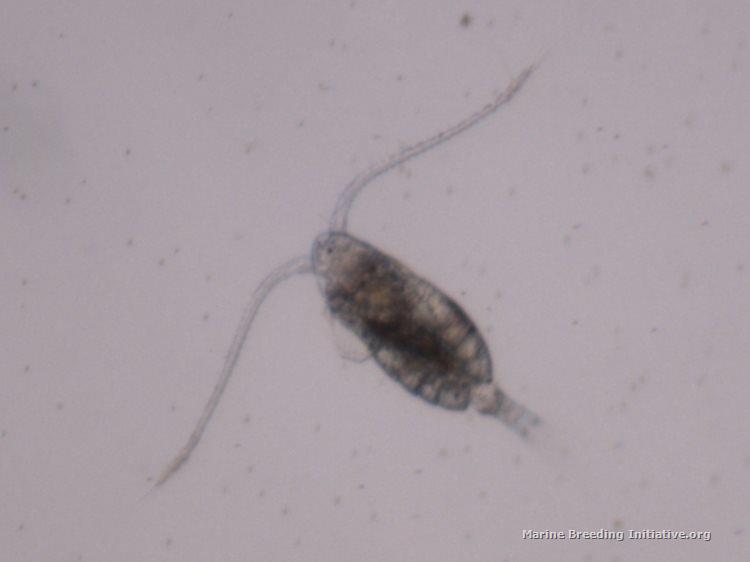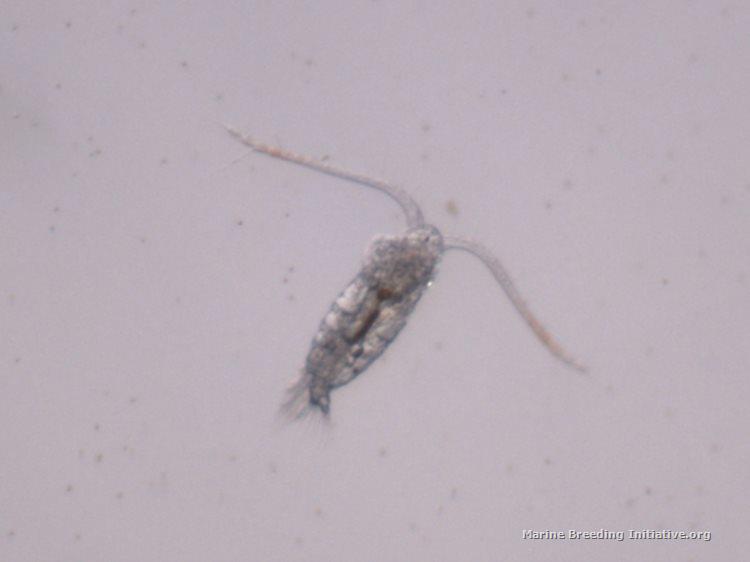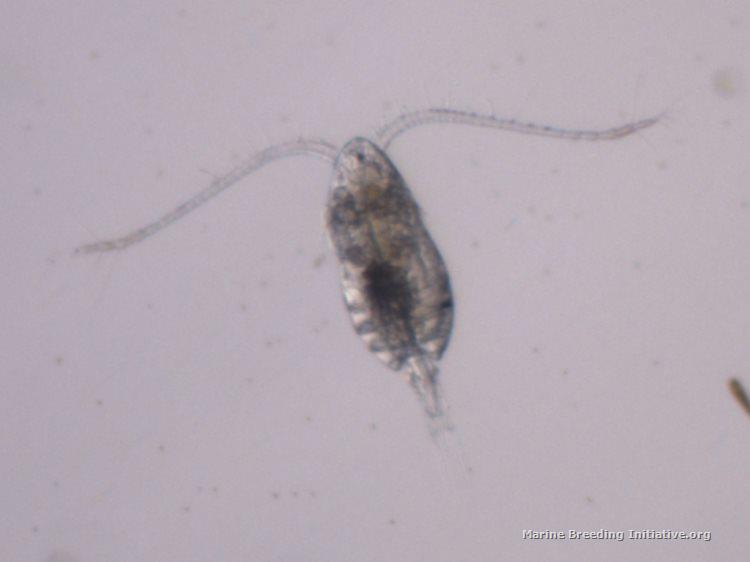I have now been continuously culturing Parocalanus crassirostris for 90 days! For the continuation report, I grabbed some quick-and-dirty images with the dissecting microscope at work today -- I didn't put enough work into them for them to look good, but they are good enough to verify that they are, in fact, Parvocalanus. Here you go:



I currently have the following cultures of P. crassirostris going (listed in no particular order):
1) A 1 liter Erlenmeyer flask
2) A 2 liter media bottle
3) A 2 liter soda bottle
4) A 2 gallon glass drum-shaped fishbowl
5) 2 x 3-gallon plastic water carboys
All of them get some air from a rigid airline. The amount of air ranges from about 1 bubble per second to perhaps 3-4 bubbles per second. They all get a small amount of live phytoplankton (usually just Isochrysis, but also Iso + Pavlova or Iso + Pavlova + Tetraselmis when I have the others available for harvest) twice daily, unless the water is still visibly tinted from the earlier feeding. I strive to keep the water just barely tinted enough to see that it is not clear, but no more. If I can tell without a doubt that it is most certainly tinted with phyto, then I consider that culture to be overfed.
If the cultures start looking too dense (sorry -- I know this is hard to quantify without a specific count of some sort of adults and/or nauplii and/or copepodites per ml), then it is time to split the culture by harvesting 25-50% of the culture (together with the culture water) and replacing the water removed with new, pasteurized water of the same salinity and temperature.
Determination of whether or not to feed should be made after the splitting the culture, although almost always any culture healthy enough to need splitting will certainly need feeding after the split.
Cultures that are both very thin with copepods and also overfed tend to have a poor recovery rate. If you have a culture in this condition, it is probably better to split it and thereby dilute the excess food. IMHO, it is probably better to have a culture with an overall lower number of animals but a more appropriate food concentration than a culture with a larger number of animals, but way too much food, because there seems to be something about the excess food that tends to kill off the nauplii.
My philosophy is to make sure that I have multiple cultures running. If one or more of my cultures starts to develop a problem, I will generally have one or more other cultures that are doing well, and I can just toss the sickly culture(s), and replace them with splits from the healthy culture(s).
<message edited by JimWelsh on Tuesday, April 9, 2013 3:13 AM>